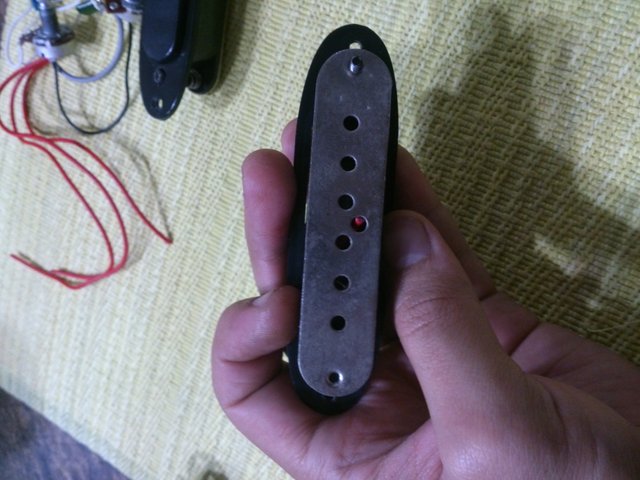Repairing an old guitar.
Hello, dear Steemians!
I've been a bit way out from Steemit, but I've come back to tell you a little about my life in recent months...
Finally, I decided to quit from all kinds of work that would take me away from my personal goals, in order to start my path through music. I had the opportunity to play in good concerts (soon I'll write a post about it). Everything seems to be flowing very well! I have had the best opportunities to do things that I truly love, such as, for example, working as a “luthier” (I'm not an expert, I just know some things hahaha). I've always wanted to study the art of being a luthier, but when I had THE opportunity to do so, I had to reject it for finding myself working in something that I really didn't like (and I regret for it). Although the work that I've been doing is somewhat simple, I consider it to be - at least - a good start to do what I love to do.

So, that's how it all starts... A great friend of mine, Diego, gave me an old and forgotten guitar that he had kept in his room for years and that he never used or was interested in using (he always knew from the beginning that he wanted to be a drummer and he wasn't interested in playing another instrument). He gave it to me since he would never use it and he would do absolutely nothing with it. I decided to keep an eye on it and these were the first details I came across:

Some screws isolated / swept (I don't understand why the image was turned). Ground cable cut.

Bad cut of wires that comes out from the pickups.
Guitar without bridge, paint damage (which at the moment I won't repair), mast and body separated, electrical installations detached and many things that shouldn't be in places where they were hahahaha.
I decided to overtake as much as I could while my friend looked for the missing pieces.
Here's the progress:

The first thing I did was to order everything: I separated the screws by size, the washers, the wiring, the potentiometers, the pickups... In short, every single piece. Then, I began to structure the steps to follow for the correct execution of my work.
I thought it would help me if I placed the neck of the guitar, so I would use it for the mobility of the instrument, and then I started to place the potentiometers and the switches that turn the pickups on / off and connect them with their respective cables. It's a somewhat old but interesting system.

I identified the cables by number and presented them in position to see the length of the cables.

Then, I peeled the end of the wires with a scalpel. Even if you think it's crazy to use a scalpel, I find it really easy to strip wires with this instrument. I have also used knives and exact. The ideal is to peel as if you were sharpening a pencil using a knife. So you will not cut the wires at all (of course, you still have to be careful).

Once this was done, I uncovered the pickups and peeled the tip of the cables, and presented them in position to evaluate. Since the cables protruding from the pickups were really short, I had to use longer cable length from the potentiometers and switches.

I put a little tin with soldering iron, so as to prevent the wires from taking off in the future.

Finally I put the plastic templates of the pickups and screwed them to the body of the guitar.

Then, I made sure to connect the ground wire to the metal part where the springs are placed for the "Floyd" bridge.

Once all this was done, I made a brief test to confirm that the system was properly installed by connecting the guitar to an amplifier and giving small touches to the pickups, adjusting both volume, tone and switches. It turned out to be ok =)
Due to the missing pieces (as I mentioned earlier), I have to wait to show you more of this project.
I hope you liked my post!